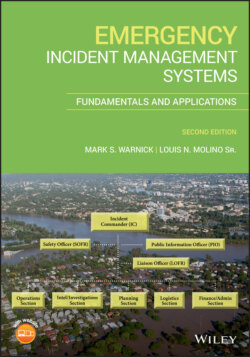Читать книгу Emergency Incident Management Systems - Mark Warnick S., Louis N. Molino Sr - Страница 20
1.4.1 No Single Person in Charge
ОглавлениеAs larger incidents occurred, often multiple jurisdictions would gather at the emergency incident, and there would be no clear command or person in charge. Additionally, in most instances, each entity did not communicate, coordinate, or collaborate with other first responders. With no clearly identifiable incident leader, it became apparent that multiple different agencies responding to the same incident had their own goals and objectives. This often led to more chaos and confusion, and it put first responders at risk as each agency “did their own thing.” Due to the fact that multiple entities were operating independently, competing tactics were sometimes contradictory to each other and dangerous to other crews operating at the scene of a major incident.
Old timers from the 1950s and the 1960s used to tell stories about how incredibly dangerous this was. While there is no way to confirm these stories, we often heard about firefighters who were directly attacking the flames with fire trucks and hoses, who would become caught in a wall of fire on all sides. From those stories, we learned that sometimes, later responding mutual aid crews did not know the first crew was actively fighting the flames, so they did what they felt was needed. These mutual aid crews would (sometimes) light backburn fires that would surround the first arriving crew, and the first arriving crew would be forced to run (or drive) for their life.
The old timers also told stories of crews helping to fight a structure fire, unaware that there were firefighters in the structure. Unbeknownst to the crews in the house, the mutual aid entity would arrive on scene, and not seeing anyone in charge, they would do what they thought was best. Not finding anyone in charge at a Command Post was typically because the command officers were usually with their crews fighting inside the fire rather than being at a Command Post and looking at the response objectively. This usually led to the mutual aid entity doing what they thought was best, and it would often cause issues. Sometimes those issues would turn life‐threatening. In firefighting, this would sometimes case a situation where interior firefighters would be hit with a large bore stream of water from the outside, or ventilation that drew the fire toward firefighters rather than away from them. This often resulted in injuries to firefighters inside.
During police actions, the old‐timers told stories of law enforcement officers nearly getting shot, primarily because the other agency had no idea the mutual aid agency was there. With tensions already high, the mutual aid agency unaware that a perimeter was partially in place, would come around the corner only to see a weapon pointed at them. There were times when officers did not realize that another officer was in the area when they were chasing a suspect, and in the pitch black, they would mistake another officer for the perpetrator. These are only a few of the dangerous issues that were caused by a lack of central command. If you want to hear some truly horrifying stories of near‐death experiences, find an old retired firefighter or law enforcement officer, and ask them to share some of their stories. The time you spend with them will be very enlightening.
